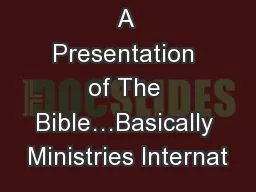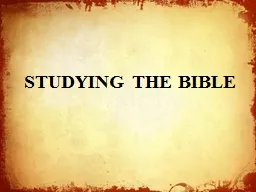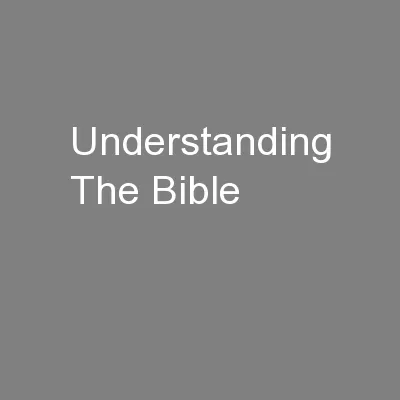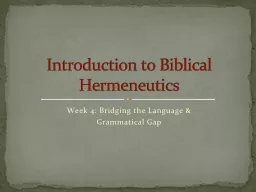PPT-Bridging the Gaps I. What is the most significant challenge when it comes to studying
Author : luanne-stotts | Published Date : 2018-01-31
The most significant challenge to understanding the Bible is bridging the communication gaps that exist between the contexts in which the Bible was written to
Presentation Embed Code
Download Presentation
Download Presentation The PPT/PDF document "Bridging the Gaps I. What is the most si..." is the property of its rightful owner. Permission is granted to download and print the materials on this website for personal, non-commercial use only, and to display it on your personal computer provided you do not modify the materials and that you retain all copyright notices contained in the materials. By downloading content from our website, you accept the terms of this agreement.
Bridging the Gaps I. What is the most significant challenge when it comes to studying: Transcript
Download Rules Of Document
"Bridging the Gaps I. What is the most significant challenge when it comes to studying"The content belongs to its owner. You may download and print it for personal use, without modification, and keep all copyright notices. By downloading, you agree to these terms.
Related Documents














